Home composting has become increasingly popular as a simple and effective way to reduce waste and produce nutrient-rich soil for your garden. If you're new to composting, this guide will walk you through every step, from selecting the perfect compost bin to understanding the perfect balance of greens and browns. This comprehensive guide aims to demystify the process for novices, helping you transform your organic waste into gardeners’ gold.
What Is Home Composting?
Home composting is the process of turning kitchen and garden waste into nutrient-rich compost in your own backyard. By combining organic materials like fruit and vegetable scraps, coffee grounds, and yard trimmings with the right balance of moisture and aeration, beneficial microorganisms break down the materials into compost. This natural fertilizer enriches the soil, improves its structure, and reduces the need for chemical alternatives. Home composting is an eco-friendly way to recycle organic waste, reduce landfill contributions, and create a sustainable cycle of nutrient return to the soil.

Learning The Composting Principles
Learning the principles of composting is essential for successfully converting kitchen and garden waste into nutrient-rich soil conditioners. Composting relies on achieving the right balance of green and brown materials, with green providing nitrogen and brown supplying carbon. Understanding this ratio ensures an optimal environment for beneficial microorganisms that break down the organic matter. Turning the compost regularly promotes aeration, expediting the decomposition process. Maintaining proper moisture levels is crucial; a compost pile should be damp but not waterlogged. Patience is key as the materials transform over weeks to months. Embracing these principles not only produces valuable compost but also contributes to waste reduction, sustainable living, and healthier gardens.
Getting Started With Home Composting
Home composting is a sustainable way to reduce waste and enhance garden soil. Adjust your approach based on your specific circumstances and enjoy the benefits of creating nutrient-rich compost for your plants.
- Choose a bin: Select a suitable compost bin or create a compost heap in your backyard.
- Balance materials: Include a mix of green (nitrogen-rich) and brown (carbon-rich) materials.
- Green: Kitchen scraps, grass clippings.
- Brown: Dry leaves, cardboard.
- Include home compostable items: Many home compostable foodservice products, such as packaging, cutlery, and plates, are now designed to be home compostable. Add these to your compost bin along with your green and brown materials.
- Bin size: Ensure the compost pile is at least 3 feet in each dimension for efficient decomposition.
- Turn regularly: Stir the compost regularly to aerate it and accelerate decomposition.
- Maintain moisture: Keep the compost moist but not waterlogged. Add water if it's too dry, or add dry materials if it's too wet.
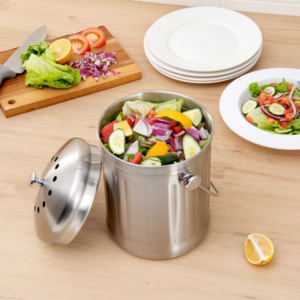
Challenges And Remedies
Home composting presents challenges such as potential odor issues, slow decomposition, and the risk of pests. To remedy these challenges, it's crucial to maintain a balanced mix of green and brown materials, turn the compost regularly for aeration, and avoid adding items like meat or dairy. Addressing moisture levels by adding water or dry materials as needed ensures optimal conditions. Troubleshooting and adapting the composting process contribute to a successful and sustainable home composting experience, transforming potential obstacles into opportunities for nutrient-rich soil creation.
- Odor issues: Balance green and brown materials, and avoid adding meat or dairy.
- Slow decomposition: Ensure a proper balance of green and brown materials, and turn the compost regularly.
- Posts: Cover food scraps with a layer of browns and avoid adding oily or fatty items.
- Not enough space: Consider smaller composting methods like vermicomposting (using worms) or compost tumblers.
- Lack of time: Opt for low-maintenance composting methods or enlist family members' help.
By addressing these challenges, home composting becomes a rewarding and sustainable practice for reducing waste and enhancing your garden soil.
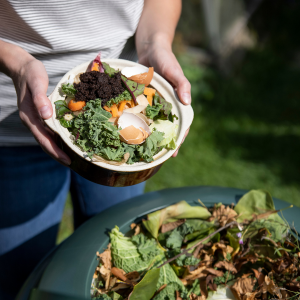
How To Choose Your Compost Bin?
Before you begin composting, it's crucial to find the perfect vessel. Compost bins can be made from metal, wood, or plastic.
- Kitchen compost bins: These are typically smaller, stylish, and odor-contained bins to collect kitchen waste before it's taken to the larger outside bin.
- Outdoor compost bins: These come in many styles - from DIY home setups using old pallets or simple heaps on the ground to high-tech tumbling bins.
- Compost tumblers: These are barrel-shaped containers that are easily rotated to mix compost materials. They expedite the decomposition process.
Your choice largely depends on your living situation, aesthetic preferences, and budget.
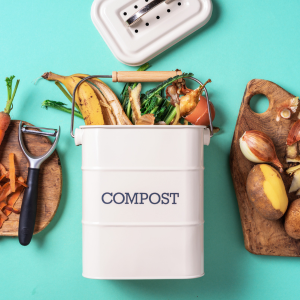
What Are Some Alternatives To Compost Bins?
Several alternatives to traditional compost bins exist for those with space constraints or seeking different methods. Vermicomposting involves using worms in a designated container, such as a worm bin, to break down organic matter. Bokashi composting utilizes anaerobic fermentation, allowing for the decomposition of food scraps in an airtight container with the help of specialized microbes. Trench composting involves burying organic waste directly into the soil, promoting natural decomposition. Compost tumblers provide an efficient way to turn and aerate compost without the need for a large space. Additionally, some municipalities offer green waste programs, where residents can dispose of organic waste in community composting facilities. Choosing the right composting method depends on individual preferences, available space, and the type of waste generated. Experimenting with different compost bin alternatives can help you find the method that best fits your needs and lifestyle.
A Microbial Feast
Composting is all about creating a conducive environment for microorganisms to break down organic matter. As these microbes decompose your browns and greens, they produce heat, which, in turn, speeds up the process. Ideally, The pile should reach temperatures between 130-160°F (55-71°C) to break down materials and effectively kill weed seeds and pathogens.
The Composting Process
Composting might sound complex, but it's fairly simple. Here's a step-by-step guide to get you started:
- Choose an approximate location for your compost bin. It should be well-ventilated and preferably in a shady area.
- Start with a layer of brown for good air circulation and drainage.
- Add a layer of green material.
- Layer your green and brown materials alternatively, with brown always at the bottom.
- Turn your compost pile every few weeks using a pitchfork or shovel to ensure materials are well-mixed and air reaches every part of the pile.
- Your compost is ready when it's dark and crumbly, resembling fertile garden soil.
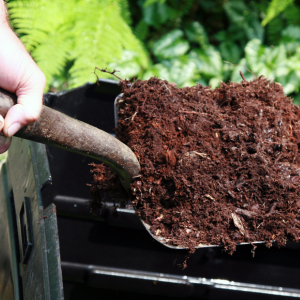
What Not To Compost?
Despite the versatility of the organic waste that can be composted, certain materials should be avoided to maintain a healthy compost pile that doesn't invite pests or diseases.
Here are some items to keep out of your compost pile:
- Dairy and meat products: Cheese, yogurt, milk, eggs, meat, fish, and bones can attract unwanted pests and emit a foul smell as they decompose.
- Diseased or insect-ridden plants: These can pass diseases or pests onto your compost, which could spread to your garden.
- Pet wastes: Cat and dog feces can carry harmful parasites, bacteria, viruses, and other pathogens. It's a safety health hazard and must be avoided.
- Oil, fat, and grease: These substances can create a film over composting materials that slows down the composting process and can also attract pests.
- Coal and charcoal ash: This can contain substances harmful to plants and should be left out of the compost pile.
- Chemically treated wood products: Wood chips or sawdust from pressure-treated wood can contain harmful chemicals that can kill composting microorganisms and damage your plants.
- Glossy or colored paper: It often contains toxins from dye and should not be composted.
Remember, composting aims to create nutrient-rich matter to feed your plants. By avoiding these items, you can maintain a healthy compost pile and, subsequently, a thriving garden.
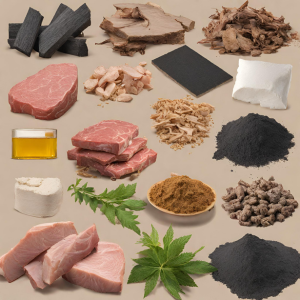
Wealth From Waste
By following this beginner's guide to home composting, you can turn your kitchen waste into a valuable resource that will liven up your gardens and reduce your environmental impact. Consider composting as a journey, not a destination: you'll learn as you go. So, brave the odds and take that first sustainable step. Because it's time you turned your trash into Earth's black gold!








